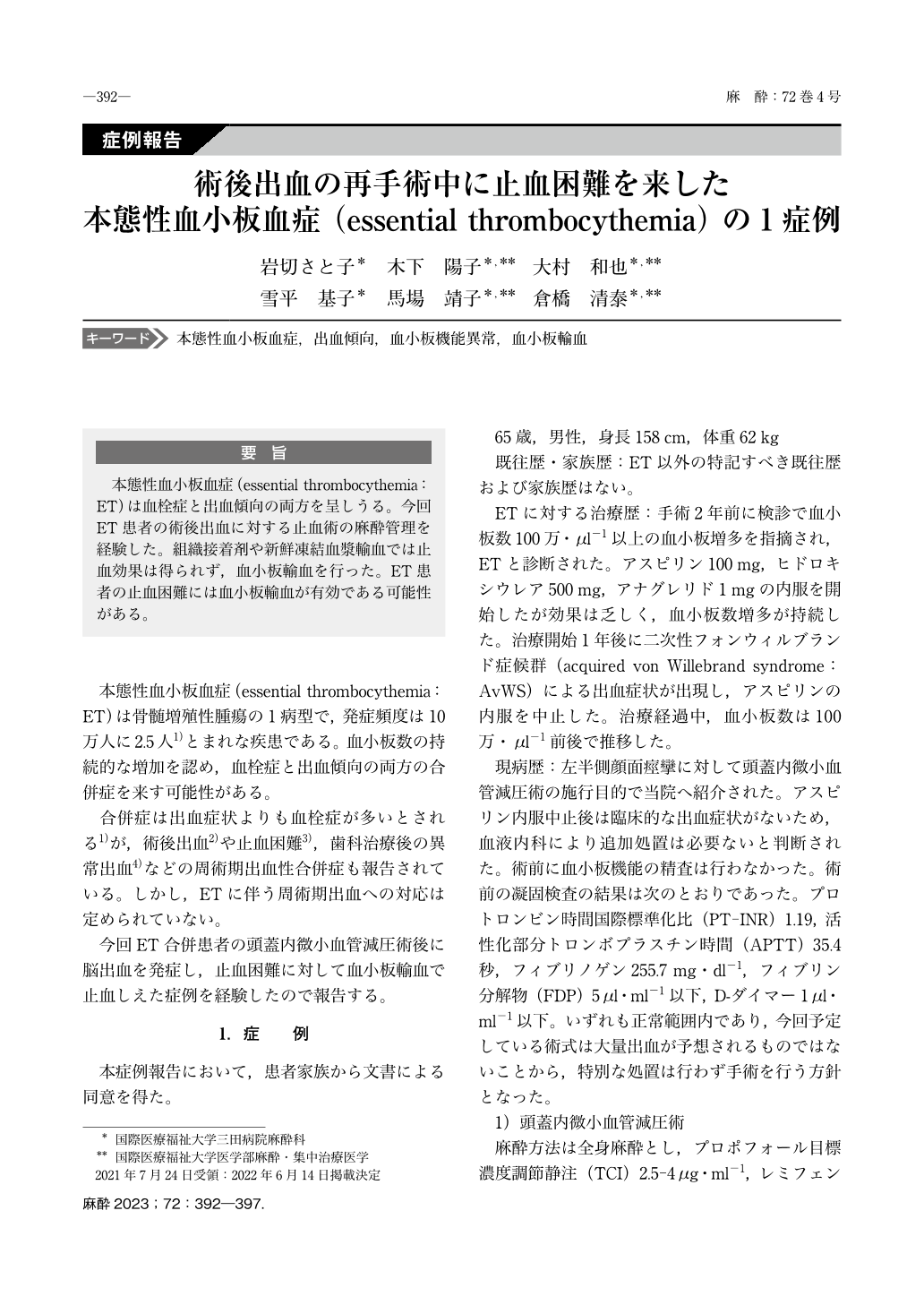Japanese
English
- 有料閲覧
- Abstract 文献概要
- 1ページ目 Look Inside
- 参考文献 Reference
要旨
本態性血小板血症(essential thrombocythemia:ET)は血栓症と出血傾向の両方を呈しうる。今回ET患者の術後出血に対する止血術の麻酔管理を経験した。組織接着剤や新鮮凍結血漿輸血では止血効果は得られず,血小板輸血を行った。ET患者の止血困難には血小板輸血が有効である可能性がある。
Essential Thrombocythemia(ET)is likely to lead to thrombogenic and hemorrhagic tendencies. We report a case with difficulty in controlling postoperative hemorrhage.
We admitted a 65-year-old man to our hospital complaining chiefly of hemifacial spasm. He was diagnosed with ET, and his previous doctor administered aspirin stat and hydroxyurea. He later developed acquired von Willebrand syndrome, and the doctor discontinued the aspirin. The patient had no clinical signs of thrombogenesis or hemorrhagic diathesis. Nevertheless, he had thrombocythemia. The patient underwent uneventful elective microvascular decompression surgery. Five and a half hours after surgery, the patient lost consciousness;a head CT scan revealed a substantial cerebellar hematoma. We applied hemostatic agents to the surgical site and administered fresh frozen plasma during an emergency craniotomy;however, we continued to experience difficulty with hemostasis. We finally transfused platelets, bearing in mind that impaired platelet function could be the cause of the bleeding. The surgeon completed the treatment and reduced the bleeding.
Medical staff should consider platelet transfusion when a patient with ET experiences uncontrollable bleeding, even if the blood count shows sufficient platelets.

Copyright © 2023 KOKUSEIDO CO., LTD. All Rights Reserved.


